2025 and 2026 Calendars: A Comprehensive Overview
Related Articles: 2025 and 2026 Calendars: A Comprehensive Overview
- OU Fall 2025 Calendar: A Comprehensive Guide
- DUSD Calendar 2025-2026: A Comprehensive Overview
- 2025 Calendar For Desktop Computers: A Comprehensive Guide
- Calendar 2025 April: A Comprehensive Overview
- Miami-Dade School Calendar 2025: A Comprehensive Guide
Introduction
With great pleasure, we will explore the intriguing topic related to 2025 and 2026 Calendars: A Comprehensive Overview. Let’s weave interesting information and offer fresh perspectives to the readers.
Table of Content
- 1 Related Articles: 2025 and 2026 Calendars: A Comprehensive Overview
- 2 Introduction
- 3 Video about 2025 and 2026 Calendars: A Comprehensive Overview
- 4 2025 and 2026 Calendars: A Comprehensive Overview
- 4.1 The Gregorian Calendar
- 4.2 Leap Years
- 4.3 2025 Calendar
- 4.4 2026 Calendar
- 4.5 Key Dates and Holidays
- 4.6 Using Calendars Effectively
- 4.7 Conclusion
- 5 Closure
Video about 2025 and 2026 Calendars: A Comprehensive Overview
2025 and 2026 Calendars: A Comprehensive Overview

Calendars serve as indispensable tools for organizing our lives, tracking appointments, and planning for the future. They provide a visual representation of time, enabling us to manage our schedules and stay on top of important events. As we approach the years 2025 and 2026, it becomes essential to have a comprehensive understanding of the calendars for these years to effectively plan and optimize our time.
The Gregorian Calendar
The Gregorian calendar, named after Pope Gregory XIII who introduced it in 1582, is the most widely used calendar in the world today. It is a solar calendar, meaning that it is based on the Earth’s orbit around the sun. The Gregorian calendar consists of 12 months, with alternating lengths of 30 or 31 days, except for February, which has 28 days (or 29 days in leap years).
Leap Years
Every four years, an extra day is added to the month of February to account for the fact that the Earth’s orbit around the sun is not exactly 365 days. This extra day is known as leap day, and it occurs on February 29th. The years that are divisible by 4 are leap years, with the exception of those that are divisible by 100 but not by 400. For example, 2000 was a leap year, but 1900 was not.
2025 Calendar
The year 2025 is not a leap year, as it is divisible by 4 but not by 400. Therefore, February 2025 will have 28 days. The calendar for 2025 is as follows:
| Month | Number of Days |
|---|---|
| January | 31 |
| February | 28 |
| March | 31 |
| April | 30 |
| May | 31 |
| June | 30 |
| July | 31 |
| August | 31 |
| September | 30 |
| October | 31 |
| November | 30 |
| December | 31 |
2026 Calendar
The year 2026 is a leap year, as it is divisible by 4. Therefore, February 2026 will have 29 days. The calendar for 2026 is as follows:
| Month | Number of Days |
|---|---|
| January | 31 |
| February | 29 |
| March | 31 |
| April | 30 |
| May | 31 |
| June | 30 |
| July | 31 |
| August | 31 |
| September | 30 |
| October | 31 |
| November | 30 |
| December | 31 |
Key Dates and Holidays
The following are some key dates and holidays that fall on the 2025 and 2026 calendars:
2025
- New Year’s Day: January 1st
- Martin Luther King Jr. Day: January 20th
- President’s Day: February 17th
- Memorial Day: May 26th
- Independence Day: July 4th
- Labor Day: September 1st
- Thanksgiving Day: November 27th
- Christmas Day: December 25th
2026
- New Year’s Day: January 1st
- Martin Luther King Jr. Day: January 19th
- President’s Day: February 16th
- Memorial Day: May 25th
- Independence Day: July 4th
- Labor Day: September 7th
- Thanksgiving Day: November 26th
- Christmas Day: December 25th
Using Calendars Effectively
To effectively use calendars, it is important to:
- Choose a calendar that meets your specific needs.
- Mark important dates and appointments clearly.
- Keep your calendar up-to-date.
- Review your calendar regularly to stay organized.
- Use technology to sync your calendar with your devices.
Conclusion
The 2025 and 2026 calendars provide a valuable tool for planning and managing our time. By understanding the structure of the Gregorian calendar and the key dates and holidays for these years, we can optimize our schedules and stay on top of important events. Whether you prefer a physical calendar, a digital calendar, or a combination of both, make sure to utilize this essential tool to stay organized and achieve your goals.
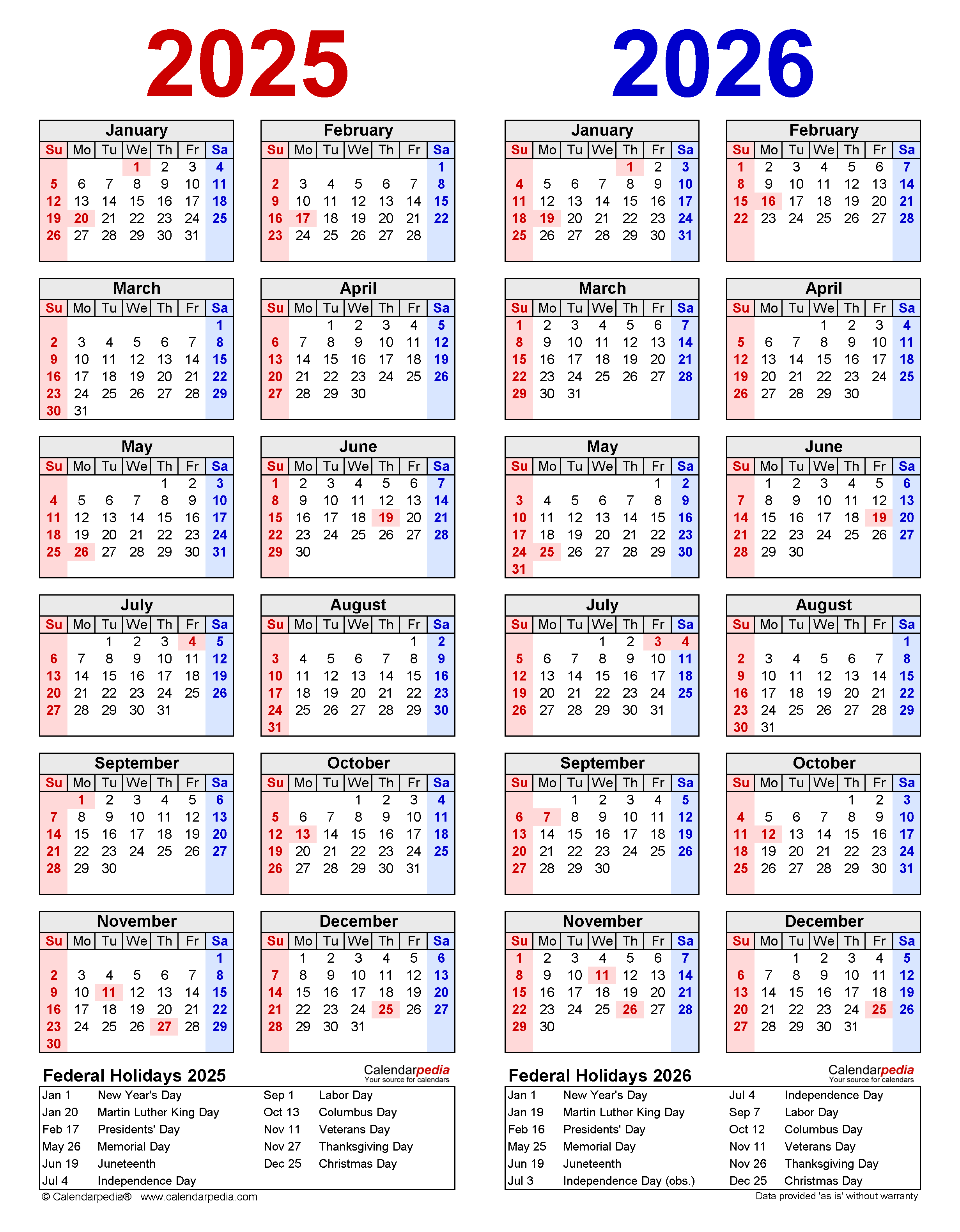

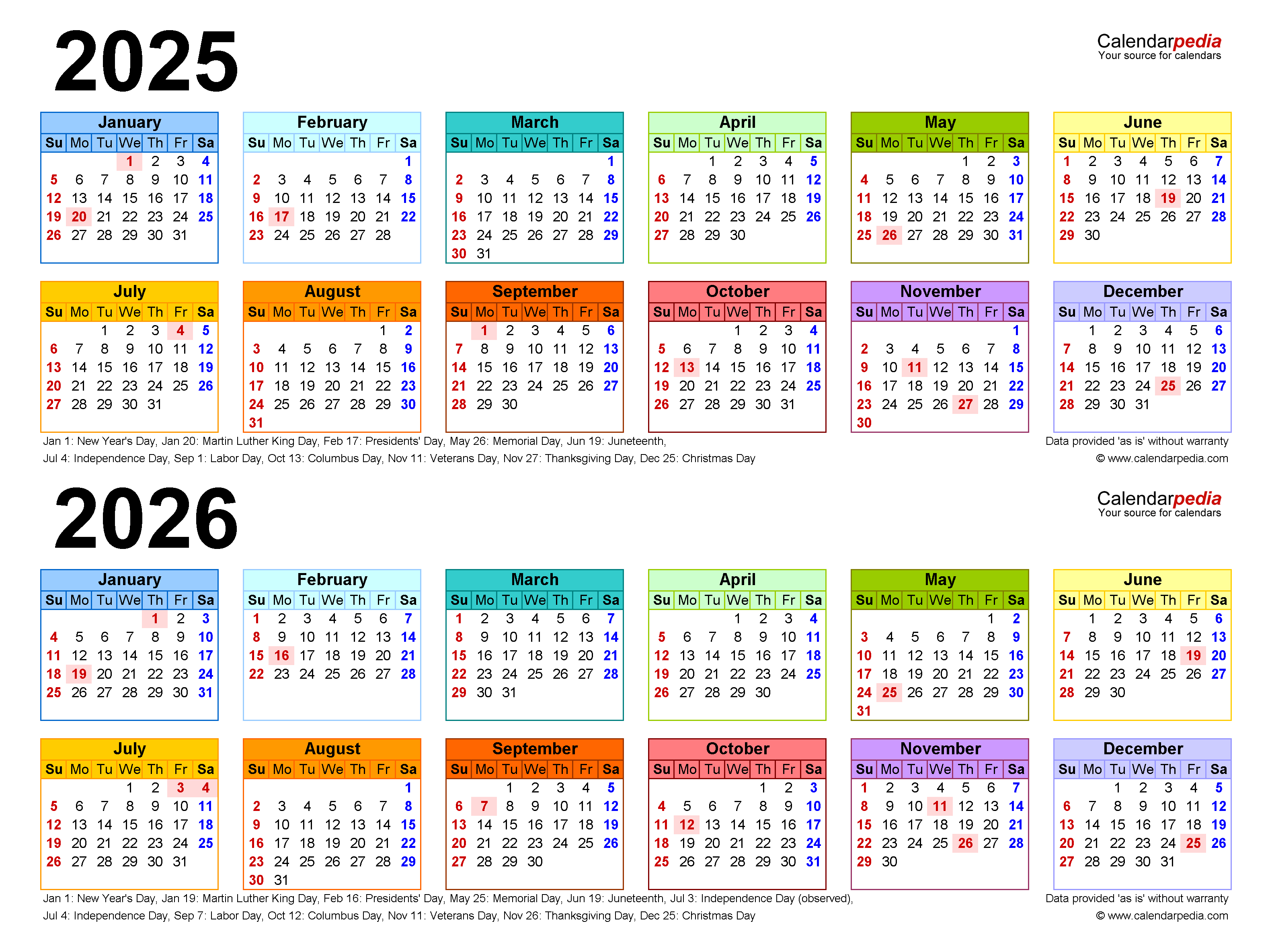
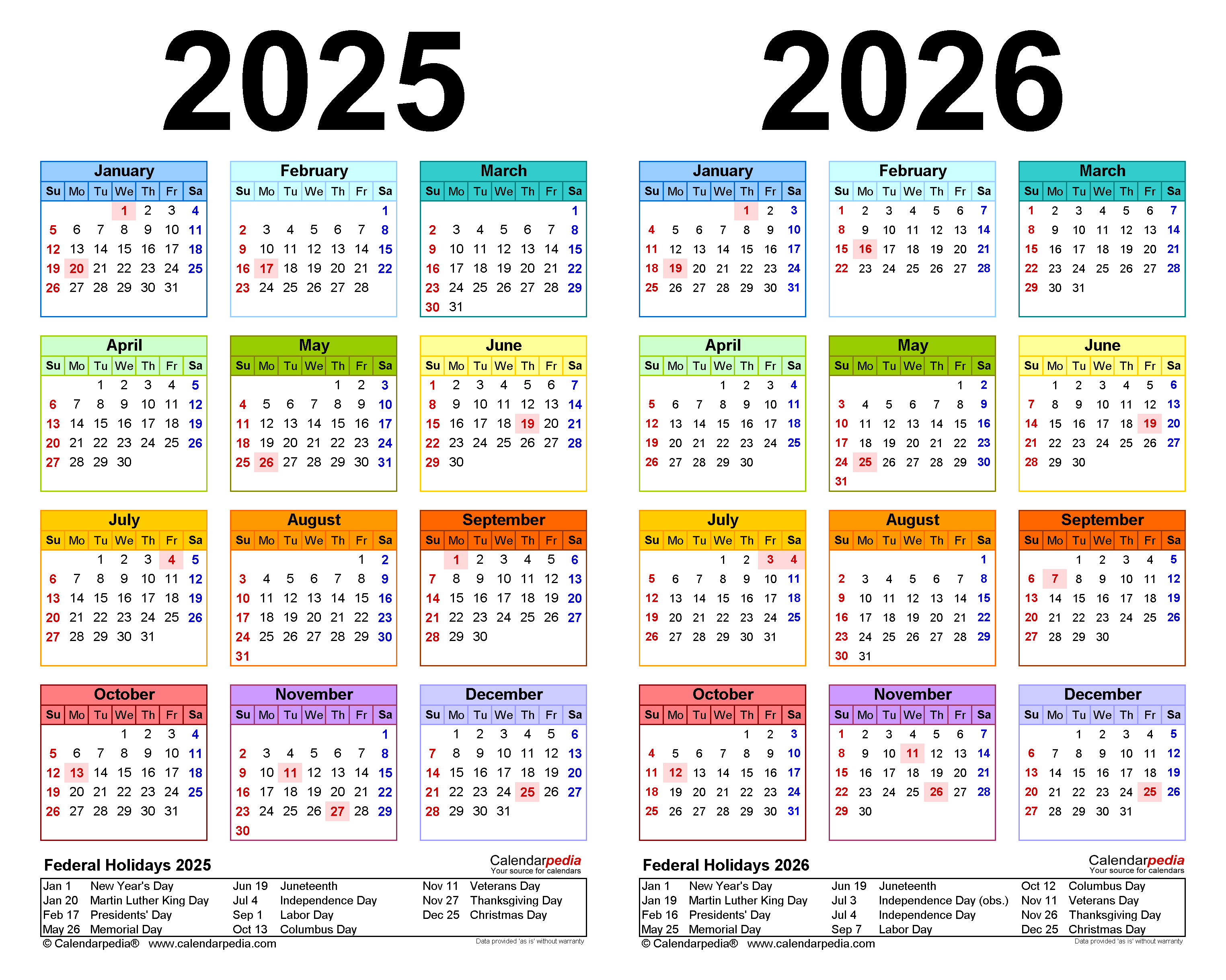

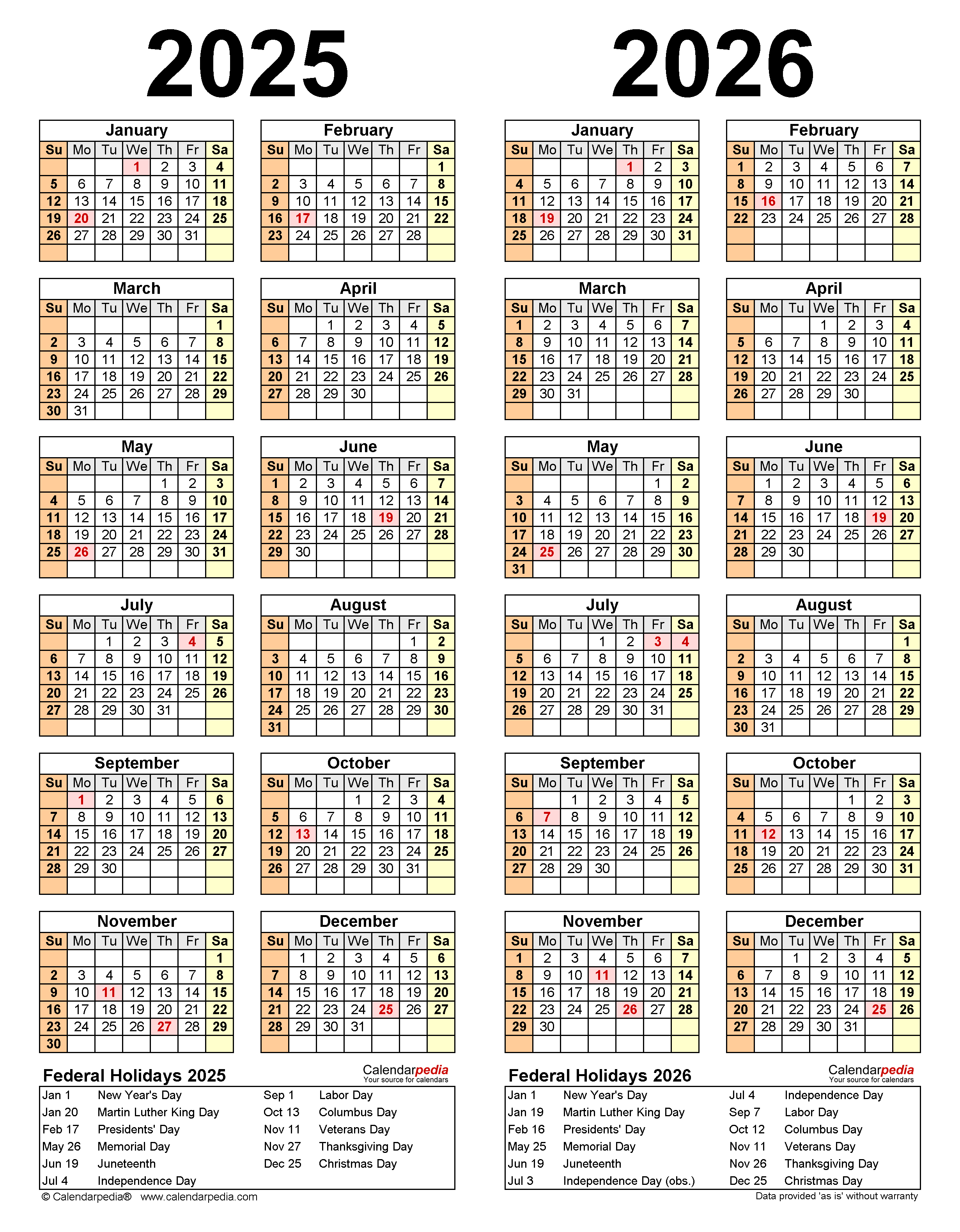
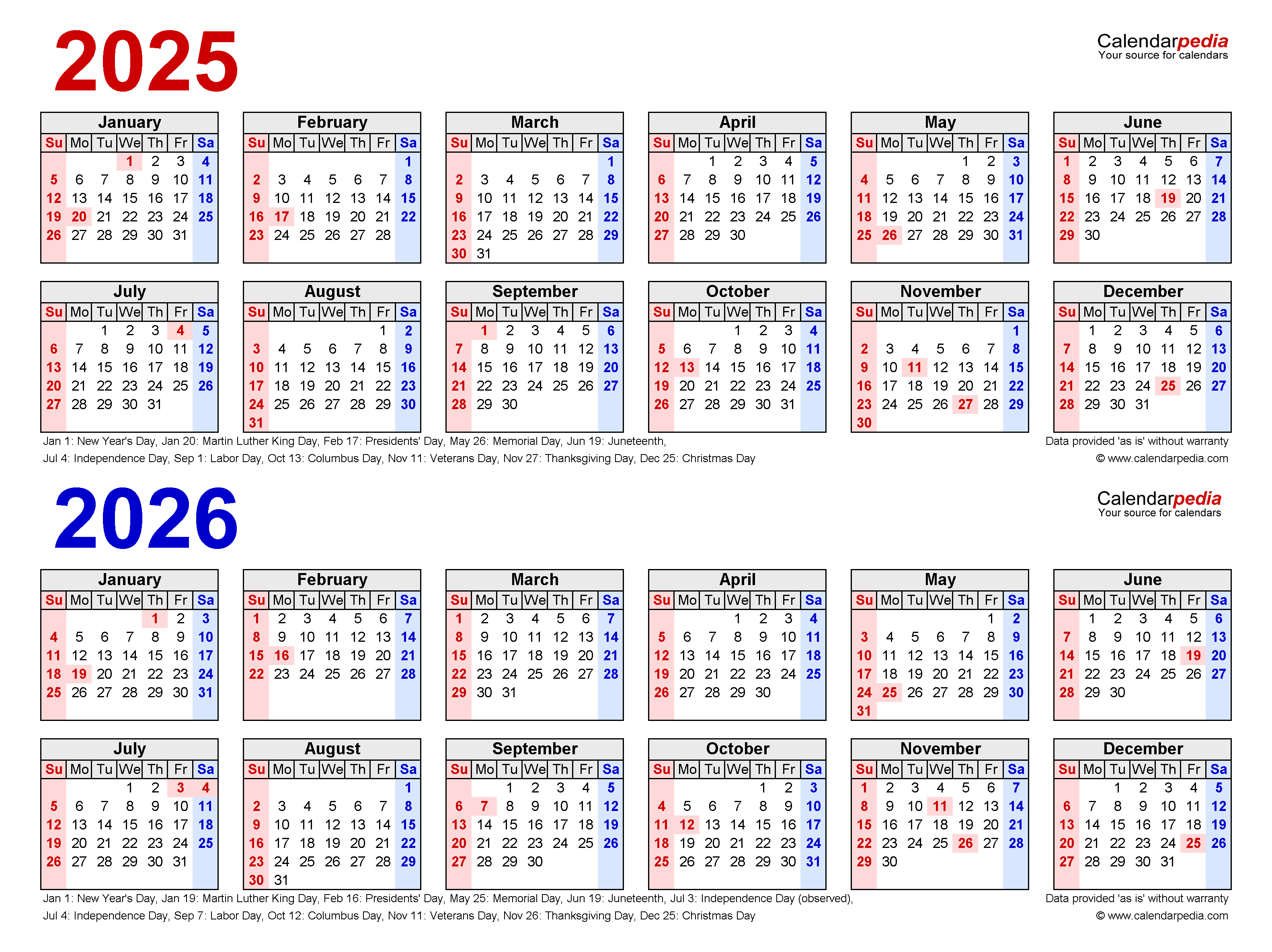

Closure
Thus, we hope this article has provided valuable insights into 2025 and 2026 Calendars: A Comprehensive Overview. We thank you for taking the time to read this article. See you in our next article!